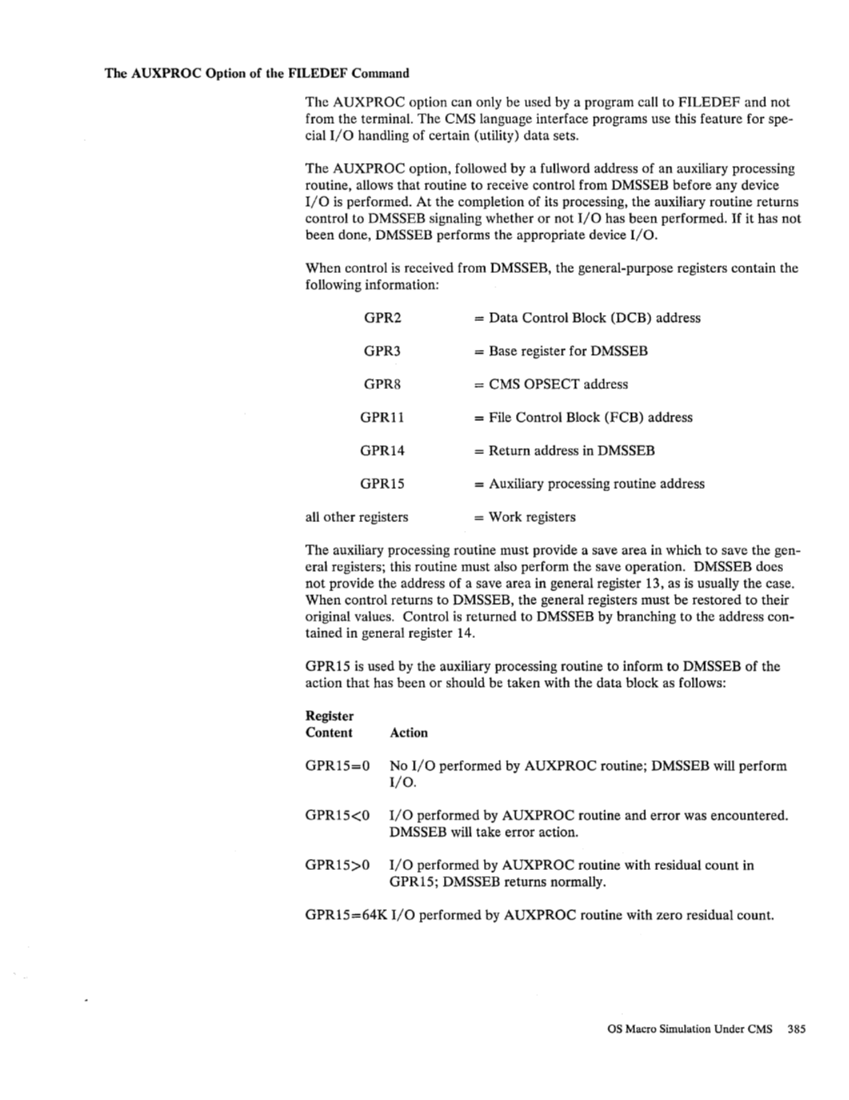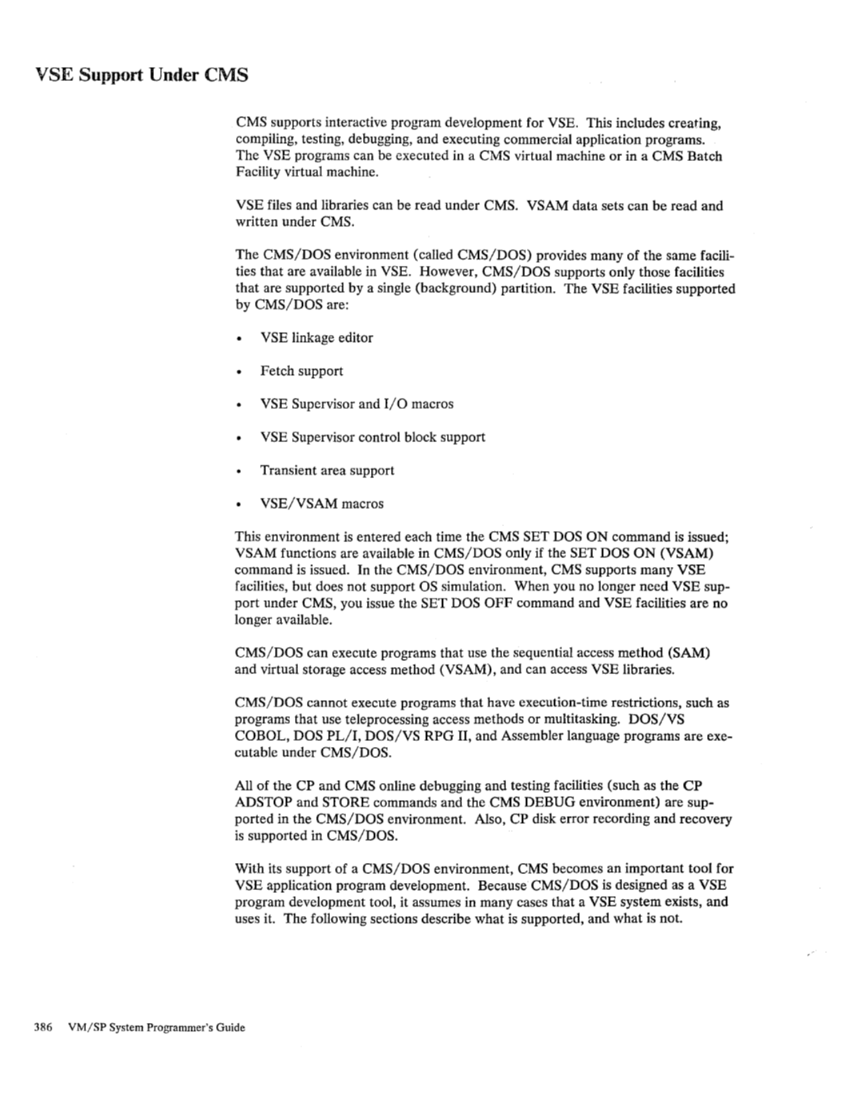The AUXPROC Option of the FILEDEF Command
TheAUXPROC option can only be used by a program call to FILEDEF and not
from the terminal. The CMS language interface programs use this feature for spe
cialI/O handling of certain (utility) data sets.
TheAUXPROC option, followed by a fullword address of an auxiliary processing
routine, allows that routine to receive control from DMSSEB before any deviceI/O is performed. At the completion of its processing, the auxiliary routine returns
control to DMSSEB signaling whether or notI/O has been performed. If it has not
been done, DMSSEB performs the appropriate deviceI/O. When control is received from DMSSEB, the general-purpose registers contain the
following information:GPR2 = Data Control Block (DCB) address GPR3 = Base register for DMSSEB GPR8 = CMS OPSECT address GPR11 = File Control Block (FCB) address GPR14 = Return address in DMSSEB GPR15 = Auxiliary processing routine address
all other registers = Work registers
The auxiliary processing routine must provide a save area in which to save the gen
eral registers; this routine must also perform the save operation.DNISSEB does
not provide the address of a save area in general register 13, as is usually the case.
When control returns to DMSSEB, the general registers must be restored to their
original values. Control is returned to DMSSEB by branching to the address con
tained in general register 14.GPR15 is used by the auxiliary processing routine to inform to DMSSEB of the
action that has been or should be taken with the data block as follows:
Register
Content ActionGPR15=O No I/O performed by AUXPROC routine; DMSSEB will perform I/O. GPR15<O I/O performed by AUXPROC routine and error was encountered.
DMSSEB will take error action.GPR15>O I/O performed by AUXPROC routine with residual count in GPR15; DMSSEB returns normally.
GPR15=64KI/O performed by AUXPROC routine with zero residual count. OS Macro Simulation Under eMS 385
The
from the terminal. The CMS language interface programs use this feature for spe
cial
The
routine, allows that routine to receive control from DMSSEB before any device
control to DMSSEB signaling whether or not
been done, DMSSEB performs the appropriate device
following information:
all other registers = Work registers
The auxiliary processing routine must provide a save area in which to save the gen
eral registers; this routine must also perform the save operation.
not provide the address of a save area in general register 13, as is usually the case.
When control returns to DMSSEB, the general registers must be restored to their
original values. Control is returned to DMSSEB by branching to the address con
tained in general register 14.
action that has been or should be taken with the data block as follows:
Register
Content Action
DMSSEB will take error action.
GPR15=64K



































































































































































































































































































































































































































































































































































































































